
In the United States, a conservation easement is a power invested in a qualified land conservation organization called a "land trust", or a governmental entity to constrain, as to a specified land area, the exercise of rights otherwise held by a landowner so as to achieve certain conservation purposes. It is an interest in real property established by agreement between a landowner and land trust or unit of government. The conservation easement "runs with the land", meaning it is applicable to both present and future owners of the land. The grant of conservation easement, as with any real property interest, is part of the chain of title for the property and is normally recorded in local land records.
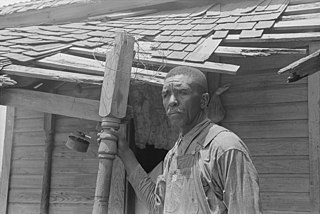
A tenant farmer is a person who resides on land owned by a landlord. Tenant farming is an agricultural production system in which landowners contribute their land and often a measure of operating capital and management, while tenant farmers contribute their labor along with at times varying amounts of capital and management. Depending on the contract, tenants can make payments to the owner either of a fixed portion of the product, in cash or in a combination. The rights the tenant has over the land, the form, and measures of payment vary across systems. In some systems, the tenant could be evicted at whim ; in others, the landowner and tenant sign a contract for a fixed number of years. In most developed countries today, at least some restrictions are placed on the rights of landlords to evict tenants under normal circumstances.
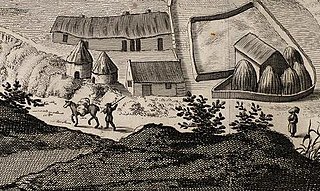
The Lowland Clearances were one of the results of the Scottish Agricultural Revolution, which changed the traditional system of agriculture which had existed in Lowland Scotland in the seventeenth century. Thousands of cottars and tenant farmers from the southern counties (Lowlands) of Scotland migrated from farms and small holdings they had occupied to the new industrial centres of Glasgow, Edinburgh and northern England or abroad, or remaining upon land though adapting to the Scottish Agricultural Revolution.
A latifundium was originally the term used by ancient Romans for great landed estates specialising in agriculture destined for sale: grain, olive oil, or wine. They were characteristic of Magna Graecia and Sicily, Egypt, Northwest Africa and Hispania Baetica. The latifundia were the closest approximation to industrialised agriculture in antiquity, and their economics depended upon slavery.
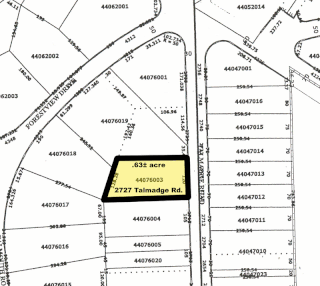
In the United States, a plat (plan) is a cadastral map, drawn to scale, showing the divisions of a piece of land. United States General Land Office surveyors drafted township plats of Public Lands Surveys to show the distance and bearing between section corners, sometimes including topographic or vegetation information. City, town or village plats show subdivisions broken into blocks with streets and alleys. Further refinement often splits blocks into individual lots, usually for the purpose of selling the described lots; this has become known as subdivision.
An estate is a large parcel of land under single ownership, which would historically generate income for its owner.
A leasehold estate is an ownership of a temporary right to hold land or property in which a lessee or a tenant has rights of real property by some form of title from a lessor or landlord. Although a tenant does hold rights to real property, a leasehold estate is typically considered personal property.

The landed gentry, or the gentry, is a largely historical British social class of landowners who could live entirely from rental income, or at least had a country estate. It is the British element of the wider European class of gentry. While part of the British aristocracy, and usually armigers, the gentry ranked below the British peerage in social status. Nevertheless, their economic base in land was often similar, and some of the landed gentry were wealthier than some peers. Many gentry were close relatives of peers, and it was not uncommon for gentry to marry into peerage. With or without noble title, owning rural land estates often brought with it the legal rights of the feudal lordship of the manor, and the less formal name or title of squire, in Scotland laird.
In Scotland a factor is a person or firm charged with superintending or managing properties and estates—sometimes where the owner or landlord is unable to or uninterested in attending to such details personally, or in tenements in which several owners of individual flats contribute to the factoring of communal areas.
In the late Roman Empire and the Early Middle Ages a colonus was a tenant farmer. Known collectively as the colonate, these farmers operated as sharecroppers, paying landowners with a portion of their crops in exchange for use of their farmlands.

Easton in England is situated on the River Deben around three miles south of Framlingham and is the former estate village of Easton Park, one-time seat of the Duke of Hamilton. The population of the parish at the 2011 Census was 331.
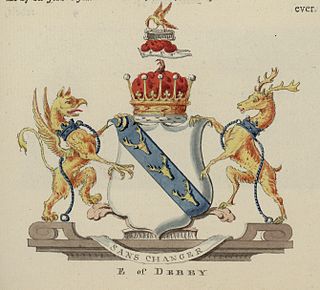
Edward Richard William Stanley, 19th Earl of Derby, is a British hereditary peer and landowner.
A gatepost is a structure used to support gates or crossbars which control entry to an area, such as a field or driveway.

A property caretaker is a person, group, or organization that cares for real estate for trade or financial compensation, and sometimes as a barter for rent-free living accommodations.
Polish landed gentry was a social group or class of hereditary landowners who held manorial estates. Historically, ziemianie consisted of hereditary nobles (szlachta) and landed commoners. The Statutes of Piotrków (1496) restricted the right to hold manorial lordships to hereditary nobility. The non-nobles thus had to either sell their estates to the lords or seek a formal ennoblement for themselves, or had their property taken away. A rare exception was the burgesses of certain specially privileged "ennobled" royal cities who were titled "nobilis" and were allowed to buy and inherit manorial estates and exercise their privileges and monopolies. Therefore, in the szlachta-dominated Polish–Lithuanian Commonwealth there was almost no landed gentry in the English meaning of the term, i.e. commoners who owned landed estates. With the Partitions these restrictions were loosened and finally any commoner could buy or inherit land. This made the 20th-century Polish landed gentry consist mostly of hereditary nobles, but also of others.
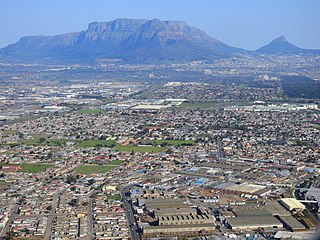
Elsie's River is a suburb of Cape Town, South Africa.

North Stoneham is a settlement between Eastleigh and Southampton in south Hampshire, England. Formerly an ancient estate, manor, and civil parish, it is currently part of the Borough of Eastleigh. Until the nineteenth century, it was a rural community comprising a number of scattered hamlets, including Middle Stoneham, North End, and Bassett Green, and characterised by large areas of woodland.

The Highland Clearances were the evictions of a significant number of tenants in the Scottish Highlands and Islands, mostly in two phases from 1750 to 1860.
Real estate is property consisting of land and the buildings on it, along with its natural resources such as growing crops, minerals or water, and wild animals; immovable property of this nature; an interest vested in this (also) an item of real property, buildings or housing in general. In terms of law, real relates to land property and is different from personal property while estate means the "interest" a person has in that land property.










